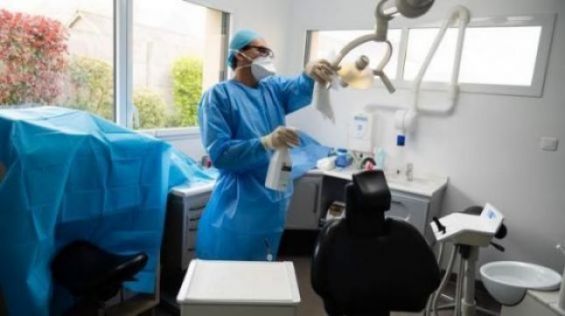Since the start of the coronavirus health crisis in Morocco, a series of measures were taken to stop the spread of the virus. According to a document compiled by the department of epidemiology and fight against diseases, these measures have prevented between 300,000 and 500,000 potential additional cases, as well as 9,000 to 15,000 deaths. This scenario is based on the assumption of a 3% fatality rate as of April 30 and a contamination rate of R0 = 2.
The same document, which sets a roadmap for the end of the lockdown, recommends that the confinement end on May 20, a date that marks the end of the state of health emergency, declared on March 20. If future data compiled by the Ministry shows that the pandemic did not reach its third phase in the country and that the R0 rate is close to 1, the abovementioned recommendation would be considered retained and motivated by the need of resuming the economy.

Indeed, this roadmap consulted by Yabiladi mentions the effectiveness of the measures taken so far to curb the spread of the coronavirus.
However, it underlines the high economic, social and health costs Morocco would face if the confinement is to be extended again beyond May 20. «Containment weighs heavily on other morbidities, which are more difficult to manage in the epidemic context», the same document reads. It could also «create or aggravate other problems (psychological disorders)», it added.
The national R0 is not yet below 1
The measures implemented by the Kingdom have also contributed to a rapid drop of the contamination rate (R0), according to the same source. The rate is at zero or close to it in several regions, but remains significantly higher in Casablanca, the first area where a case of Covid-19 was detected on March 2 and the main one affected by the pandemic.
The Health ministry previously announced that maintaining an R0 below 1 for 15 days would pave the way for the end of the lockdown. Until May 5, the base for the national average was at 1.01. However, the most affected regions remain above this number, including in Casablanca (1.09), Marrakech (1.07), Tangier (1.06) and Fez (1.04).

Until May 20 and taking into account the evolution of the situation, the department expects to record 6,400 cases. From the start of the pandemic to May 7, this figure stood at 5,548, with 183 deaths and 2,179 recoveries.
A step-by-step way out of containment to avoid a second wave
The department is considering two scenarios for lifting the containment. This would be possible if workplace hotspots and closed communities were controlled, the end of this epidemic episode being «scheduled between May 16 and 22», accompanied by «sporadic cases on average between 10 and 20 at the end of the 'epidemic».
In the second scenario, the pandemic would experience a «rollercoaster» and the «spreading of the virus would be limited to certain areas». In both cases, «the resurgence of the epidemic after the lifting of the containment remains possible», warns the same source.

This roadmap also warns that maintaining «a strict confinement until the extinction of new cases is impossible» and that «the total and brutal exit from confinement constitutes a high risk of triggering a second wave» of the pandemic. Therefore, the document recommends that with the lifting of containment, the healthcare system should adapt to the situation by maintaining high levels of alertness.
Thus, it would also be important to take into consideration people with specific needs, the elderly or those exposed to high morbidity rates, to strengthen health programs and to carry out late deconfinement of people at risk, while promoting remote medical consultations and monitoring.





 chargement...
chargement...













